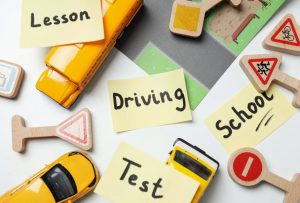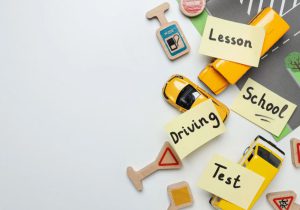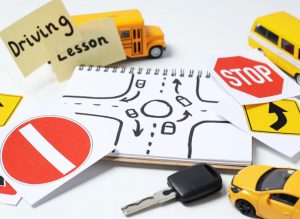
Quick Overview
Learning to drive is a structured process that combines professional lessons with private practice. While the DVSA suggests an average of 45 lessons plus 22 hours of private driving, the exact number varies depending on experience, confidence, and practice frequency. This guide helps you understand:
✅ Typical lesson requirements and DVSA recommendations
✅ Factors affecting how many lessons you need, including confidence, instructor style, and environment
✅ Differences between intensive courses and regular learning
✅ Signs you’re ready for your driving test
✅ Cost breakdown and tips to reduce lesson hours effectively
✅ How manual vs automatic vehicles impact learning time
So, you’ve finally taken the plunge and applied for your provisional licence. You’re eager to get on the road—but the big question on your mind is probably: “How many driving lessons do I actually need?”
It’s a fair question—and a practical one too. Learning to drive isn’t just about getting behind the wheel and hoping for the best. It’s a structured process that requires patience, practice, and proper instruction. Whether you’re budgeting for your lessons, planning your timeline, or just curious, understanding how many lessons you’ll need is essential to preparing for a smooth driving journey.
In this blog, we’ll break down the typical number of lessons learners take in the UK, what affects that number, and how you can speed up your progress (without cutting corners).
What the DVSA Recommends
Let’s start with the official guidance. According to the Driver and Vehicle Standards Agency (DVSA), the average learner driver in the UK needs around:
45 hours of professional driving lessons
+ 22 hours of private practice
That’s not a hard rule, but it’s the national average. Some learners pass in fewer hours, while others need a bit longer—depending on confidence, age, previous experience, and how often they practise.
So, you might be wondering—do I really need that many hours?
Let’s unpack what affects how many lessons you’ll need.
Optimizing Driving Skills for Safety and Efficiency: Master the Road with Confidence!
Key Factors That Determine How Many Driving Lessons You Need
1. Your Confidence and Comfort Level
Some people take to driving naturally. Others need time to build confidence. If you’re nervous or anxious, it might take longer to feel in control and react calmly in traffic situations. That’s okay—everyone learns at their own pace.
2. Frequency of Lessons
If you’re taking just one lesson a week, it will take longer to build and retain skills. On the other hand, if you can manage two to three lessons per week, you’ll likely progress faster and need fewer overall hours.
3. Private Practice
Do you have someone—like a parent or older sibling—who can supervise you legally while you practise outside lessons? If so, those 22 hours of private driving can dramatically reinforce what you learn in lessons and reduce the number of paid hours needed.
Just remember: you must be insured, display L-plates, and be supervised by someone over 21 who has had a full licence for at least 3 years.
4. Your Instructor’s Teaching Style
A good instructor who adapts to your learning style will help you progress more quickly. If you’re not getting on well with your instructor, don’t hesitate to switch—your time and money matter.
5. Learning Environment
Driving in a quiet rural town is very different from learning in busy London traffic. City learners might need more hours to deal with complex junctions, heavy traffic, and roundabouts.

Should You Take Intensive Driving Courses?
Intensive driving courses can be a great way to fast-track your learning. These usually involve 5 to 10 days of back-to-back lessons and are ideal if you’re aiming to pass quickly.
But they’re not for everyone. You’ll need to:
- Absorb information quickly
- Handle long hours behind the wheel each day
- Stay focused under pressure
If you already have some experience or are a quick learner, intensives can be cost-effective. But if you’re a complete beginner or nervous, spreading lessons out over time might be more effective (and less stressful).
Signs You’re Ready for the Driving Test
Regardless of how many lessons you’ve had, the goal is to become a safe, confident, and independent driver. You’re ready for your test when you can:
- Drive without assistance
- Handle different road types and conditions
- Perform all manoeuvres correctly
- Anticipate hazards and react calmly
- Follow road signs and markings confidently
- Navigate busy roads, roundabouts, and motorways (if allowed)
If you’re still second-guessing yourself or making repeated mistakes, you might need a few more sessions to fine-tune your skills.
Manual vs Automatic: Does It Affect Lesson Count?
Yes. Generally, learning in an automatic car takes less time than learning in a manual. That’s because you don’t need to worry about:
- Clutch control
- Gear changes
- Stalling the engine
But keep in mind—if you pass your test in an automatic car, you’re not legally allowed to drive a manual unless you pass another test in one. If you’re planning to buy or rent manual cars in the future, it’s usually better to learn and test in one.
How Much Will Driving Lessons Cost in Total?
Let’s break it down using the DVSA average of 45 hours:
- Average cost per hour (UK): £30–£40
- 45 hours x £35 = £1,575
That doesn’t include:
- Theory test fee: £23
- Practical test fee: £62 (weekday) or £75 (evening/weekend)
- Provisional licence: £34 (online)
Learning to drive isn’t cheap—but it’s a life skill that pays off for years.
Tip: Look for block bookings or new learner packages. Many instructors offer discounts if you book 10 or 20 lessons upfront.

How to Reduce the Number of Lessons You Need
Here’s how to speed up your progress (without rushing dangerously):
✅ Take regular lessons
Weekly or bi-weekly sessions help build muscle memory and confidence.
✅ Use a learner logbook
Track your progress and set learning goals for each week.
✅ Practise between lessons
If you can drive with a family member, practise what you’ve learned in your lessons. It’s the best way to reinforce skills.
✅ Study the theory alongside your lessons
Knowing the rules helps you apply them in real driving situations.
✅ Don’t skip manoeuvres
Parallel parking or reverse bay parking might seem tough, but practice makes perfect—and you’ll need them in the test.
Frequently Asked Questions
Can I Pass My Test with Fewer Than 45 Hours?
Absolutely. Some learners pass in 20–30 hours, especially if they’re quick learners or have private practice. But don’t rush it just to save money—being underprepared can cost you more in the long run.
Can I Take the Test Without an Instructor?
Yes, but most learners use their instructor’s car for the test. It’s insured and fitted with dual controls. If you’re using your own car, it must meet DVSA standards.
What if I Fail My Driving Test?
No shame in it—many people fail their first attempt. Your instructor can help review what went wrong and schedule a retest when you’re ready. You’ll need to wait 10 working days before rebooking.
Optimizing Driving Skills for Safety and Efficiency: Master the Road with Confidence!
Final Thoughts
There’s no magic number of driving lessons that guarantees success. Some people get it in 30 hours, others in 60. The key is consistency, confidence, and proper preparation.
Instead of focusing solely on numbers, ask yourself:
“Am I ready to drive safely and independently without help?”
If the answer is yes, you’re good to go. And if not, you’re just a few more lessons away.
